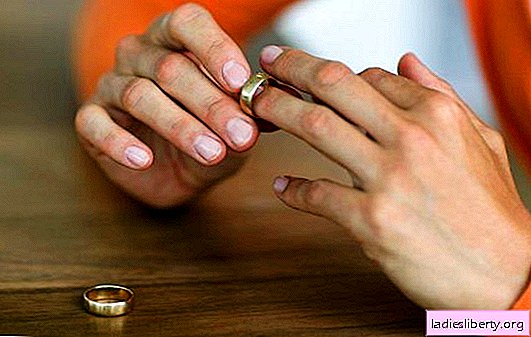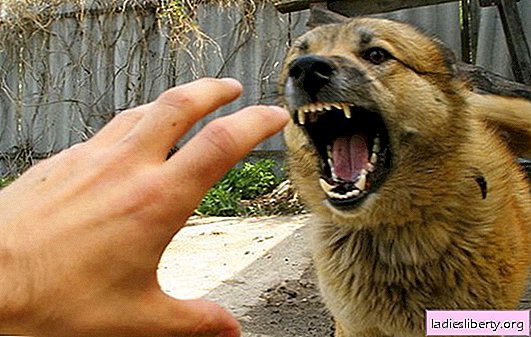
At six years old, a child, one might say, is a fully formed personality. He is aware of his position in an adult or children's team. Based on this, it forms an attitude towards others and builds a line of its behavior, which it is able to control. He complies with generally accepted norms, acts not as he wants, but as required by the rules and regulations. He is able to feel the mood of others, offers help, shows sympathy and compassion.
At 6 years old, the child’s memory capacity increases sharply, he easily remembers new information, retells new tales close to the text. In his vocabulary from 4 to 6 thousand words. He easily counts up to 10 and more, both one way and vice versa. Solves simple problems and examples.
Recognizes shrubs and trees by fruits and leaves, is familiar with the name of the months of the year, week. He knows many animals, correctly calls them cubs: a horse is a foal (and not a “horse”), a cow is a calf. Calls migratory and wintering birds. He knows how to support the conversation, in the conversation uses direct and indirect speech.
Child nutrition at 6 years old
The nutrition of children 6 years old remains approximately the same as it was at 5 years old. Only the culinary processing of products changes. Six years old, you can already give pork chop, fried meatballs or fish with a low bone content. It is too early to introduce mushrooms into the diet - neither fresh nor canned. Firstly, their processing is difficult for the baby’s stomach, and secondly, to eliminate poisoning. Natural coffee, even diluted with milk, is not recommended.
Food for children should not be too hot nor cold. The optimum temperature, depending on the particular dish, should vary between +10 and +50 degrees. Sharp changes should be avoided and hot tea should be served, for example, after jelly. This is destructive to both the enamel of the teeth and the walls of the stomach, irritating the mucous membrane. Which can lead to inflammation or indigestion of food.
In summer, due to heat, appetite is usually reduced. So that the body does not experience a deficiency of nutrients, the nature of nutrition should be changed. It is necessary to reduce the number of fatty foods, replace them with more easily digestible and digestible. Milk can be replaced with dairy products, heavy soups or borscht with beetroot, okroshka, and vegetarian dishes. In season, vegetables should be consumed to the maximum. Delicious dishes are obtained from their green peas, cauliflower, zucchini, bell pepper. It is better to replace sweets and pastries with natural fruits or dishes from them - to cook fruit purees, cereals, soups, soufflés. Salads should be made not only from familiar tomatoes and cucumbers, but also from sweet pepper, radish, cabbage, lettuce leaves, sprinkling them abundantly with herbs.
In winter, the body needs more nutritious food. It is not necessary to increase calories only at the expense of fats, it is more useful to consume vegetable proteins. Six-year-olds can be given nuts, bran bread, and legumes - beans, peas, and lentils. You can replenish vitamin C reserves if you give your child a rosehip decoction, tea with the addition of lemon balm, lemon.
6-day child's day routine
The daily regimen of a six-year-old child practically does not differ from the routine of five-year-old children. Eating, playing, walking alternate in the usual manner after a certain period of time. The only difference is that some children can already do without daytime sleep. Therefore, you can spend this time on the street, read a book to your child, or take up quiet games.
If the child has already gone to first grade, you need to know that it will take about two months to adapt to the new daily routine. A big load fell on his psyche and nervous system, so he should have enough time to rest. It should be put to bed on time, not allowing to stay up late. He needs at least ten hours of daily sleep. Therefore, its optimum time for going to bed can be determined at 9 pm, and the morning rise at 7 am. Some children may return to daytime sleep. Even those who did not go to rest during the day can fall asleep after school themselves. It is not necessary immediately after school to seat the child for homework. You need to feed him, and then give time to relax - put him to bed or let him go for a walk.
The best time to complete the task is from three to five in the afternoon. You can start the lessons after a day's sleep or returning from a walk. Do not stretch the time allotted for homework. As well as transferring them to the evening. Sometimes in the afternoon the child is lethargic and inactive, and by evening he is active. Especially when the whole family is assembled, adults talk loudly, and even the TV is on.
It may seem to you that he is energetic from a surge of fresh strength. Unfortunately, most often evening hyperactivity is due to overexcitation of the nervous system. That is why you should not postpone the completion of lessons at a later time. The child should be reassured and relieved. It is best to take him for a walk before bedtime or send him to play in his room. At night, you can give a glass of warm milk, mixed with a spoon of honey. No matter how the morning goes in a hurry, you do not need to eat sandwiches on the go. Before school, the child must be fed a hot breakfast.
Lessons with a child at age 6 (how to develop)
When dealing with a child, it is necessary to teach him not only counting and reading, but to develop it in many ways. Pay particular attention to the development of memory, both visual and auditory. After all, at school, children will have to memorize a lot of information. In the meantime, you can play an exciting game. To develop auditory memory, pronounce clearly 8-10 words, and let the child repeat after you. If he can remember at least six words, this is already a good result. When you deal with it systematically, you yourself will notice dramatic changes.
To train visual memory, you will need pictures. A sheet of paper must be drawn in squares. In each of which stick any image, for example, cartoon characters or a flower, insect, animal. Let the child look at the squares for 30 seconds. Then the sheet is turned over, and the child says that it was depicted in any order on it.
To enrich the vocabulary, there is such an exercise. An adult calls a word, and a preschooler explains in his own words what it means. You can play such a game. The adult begins the sentence, for example, "we will go to the park", and the child continues - "we will ride on a swing, listen to birds sing, catch butterflies, etc.".
Games and toys for children at 6 years old
Toys of six-year-old children are more adult and complex than those of five-year-olds. These are designers with a large number of small parts, and puzzles not from 24 or 60 fragments, but from a hundred or more. Boys at this age like to glue collapsible tanks, aircraft, consisting of parts, guided by the instructions. Many children by the age of six have already mastered the computer. They not only play games, but also perform simple actions - they create files, know how to save them, and correspond with their peers.
A child at 6 years old has great perseverance, able to concentrate for a long time on one lesson. He likes to cut with scissors. Moreover, he easily copes even with small figures, smoothly cuts a straight line. You can give him an old colorful magazine to cut out pictures. At this age, children love to make gifts with their own hands. For example, string large beads, cut into pieces of straws for a cocktail, to make a bracelet or beads. And from a copper wire you can weave a ring, a pigtail or a toy on a Christmas tree. It will turn out especially beautifully if you take the wire in color insulation. Girls can be taught to embroider, boys can be burned or sawn with a jigsaw. Both boys and girls like to make dishes from clay. Which can then be dried in the oven and varnished.
Often, after reading a book, children are overwhelmed with emotions. Try to transfer them to paper with him, creating your own illustration for a fairy tale or to mold fairy-tale heroes from plasticine. The development of fine motor skills helps a homemade mosaic. It is necessary to distribute plasticine with a thin layer on the surface. As a basis, you can take a cardboard or a cover from the box. And then, using a variety of cereals - peas, buckwheat, beans, create pictures by pressing grains into plasticine.
Raising a child at age 6
Parenting at the age of 6 has a special role, as the child will go to school very soon. Most of the time he will be among not always familiar people, both adults and peers. Therefore, the problem of its socialization in society should be given special attention. He must be taught to establish contacts with people, not only to be obedient, but also to have his own point of view, to be able to defend it and convince others. It would be nice to lose some situations with him that he might face at school. Explain how in this case he should behave correctly, suggest the most acceptable model of behavior.
It is necessary to continue to instill in the child good manners and a culture of behavior. He should always be neat, fit, polite, and if necessary provide assistance and support to his comrades. He should be introduced to concepts such as honesty, justice, camaraderie, kindness, optimism, and courage. It is necessary to educate the child so that he not only has theoretical experience, but also behaves in a similar way in real life.
Useful Tips for Parents
Your son or daughter is about to go to first grade. For children, this is a very exciting moment. Give them a holiday! Let in their life he will remain as one of the most memorable and pleasant days. Spend time with them. Take a day off at work or plan a vacation for September. In the morning, decorate the apartment with elegant balls. After the school line and the lesson of the world, go with a child to a cafe to celebrate a joyful event. You can cooperate with other first graders or grab guys from the yard for the company. Let them share the fun with your first grader.
You have already prepared a school suit for your son and ironed your daughter’s uniform. There is a large bright satchel by the bed, in which copybooks, notebooks and pencils are neatly folded. Tomorrow a very crucial moment will come in the life of your child. At first, he will feel very uncomfortable in the new environment. It can sometimes stubborn and not want to get up in the morning. Your help is needed here. Give him a magical plush toy, preferably with a pocket. In which every morning a very interesting thing for a child will appear - a bright eraser, a new icon, a candy in a beautiful wrapper, a delicious vitamin, a nut, etc. Then the child will quickly get up from the crib and get ready for school in a good mood.











